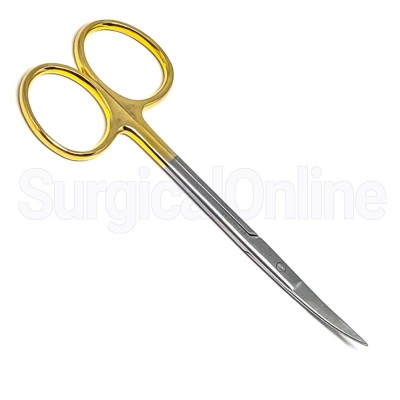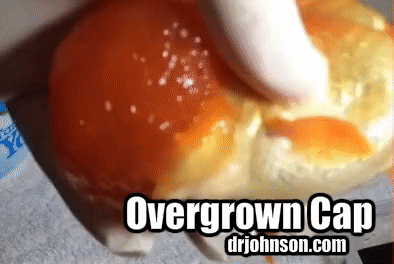Overgrown Head Growth, Cap or Wen in Orandas
A peculiar disorder of goldfish is the overgrowth of the cap to the extent that the eyes are covered. In most instances, this does not matter to the fish. Blind fish can apprehend food as effectively as the sighted colleagues in the aquarium. However, it is true that sighted fish do ‘play’ and blind ones do not interact as profitably with tank mates.
The correction of the disorder is a surgical one. You should induce anesthesia with Oil of Cloves or Eugenol© and once the fish is still, you would lift the fish from the water. There are two pieces of equipment you could use for this procedure. One might choose a fine scalpel, which is what I use for a clean post-surgical look. A #10 scalpel blade is ideal for this procedure because it is big enough to manipulate effectively, and small enough to get near the eye. The blade is introduced adjacent to the eye and the cut is made at an angle to the eye, removing the tissue around the eye. Extreme care must be employed to avoid lacerating the globe. This is easier said than done because you cannot see where the tip of your blade is. Still, having handled a #10 scalpel more than several thousand times, I am fairly dexterous with it. I can complete the trimming within four to five minutes under the most arduous of circumstances.

There is a bone UNDER the eye which is essentially a ‘zygomatic process’ and can’t be cut. If you trim too aggressively you will leave no ‘socket’ for the eye. So be sparing around the eye.
One could also use a pair of Iris Tenotomy scissors. These scissors have a devilishly sharp set of points and could be used to pare away the excess growth over the eye.

One conspicuous point about this surgery is that the head growth never attaches to the globe at any point. Indeed, it is possible cut away too much of the head growth and you may find the eyes protruding without support into the water.

Overgrown Head Growth, Cap or Wen in Orandas
If the fish begins to struggle during the procedure, please place it again into the aerated oil of Cloves solution. If the fish is not struggling but has been out of the water for more than 90 seconds, please place the fish into well-aerated normal tank water for a ‘breather’. Then resume where you left off. In all instances, you should maintain the fish under a fairly deep plane of anesthesia where gill excursions are less than a flex per several seconds. During many of my surgeries, gill excursions occur at an interval of less than one per minute.
No sutures are needed. The fish will bleed very nominally after the procedure. It is remarkable to me how quickly the fish can clot up despite its aqueous recovery area.
Knowledgeable Chinese and Japanese breeders have told me that they would not perform this procedure because of genetic performance. Good head growth is a proud thing. Surgically concealing other defects is undesirable, as well. I do not question their motives but I must report that I’ve had great success and achieved very cosmetic results.






